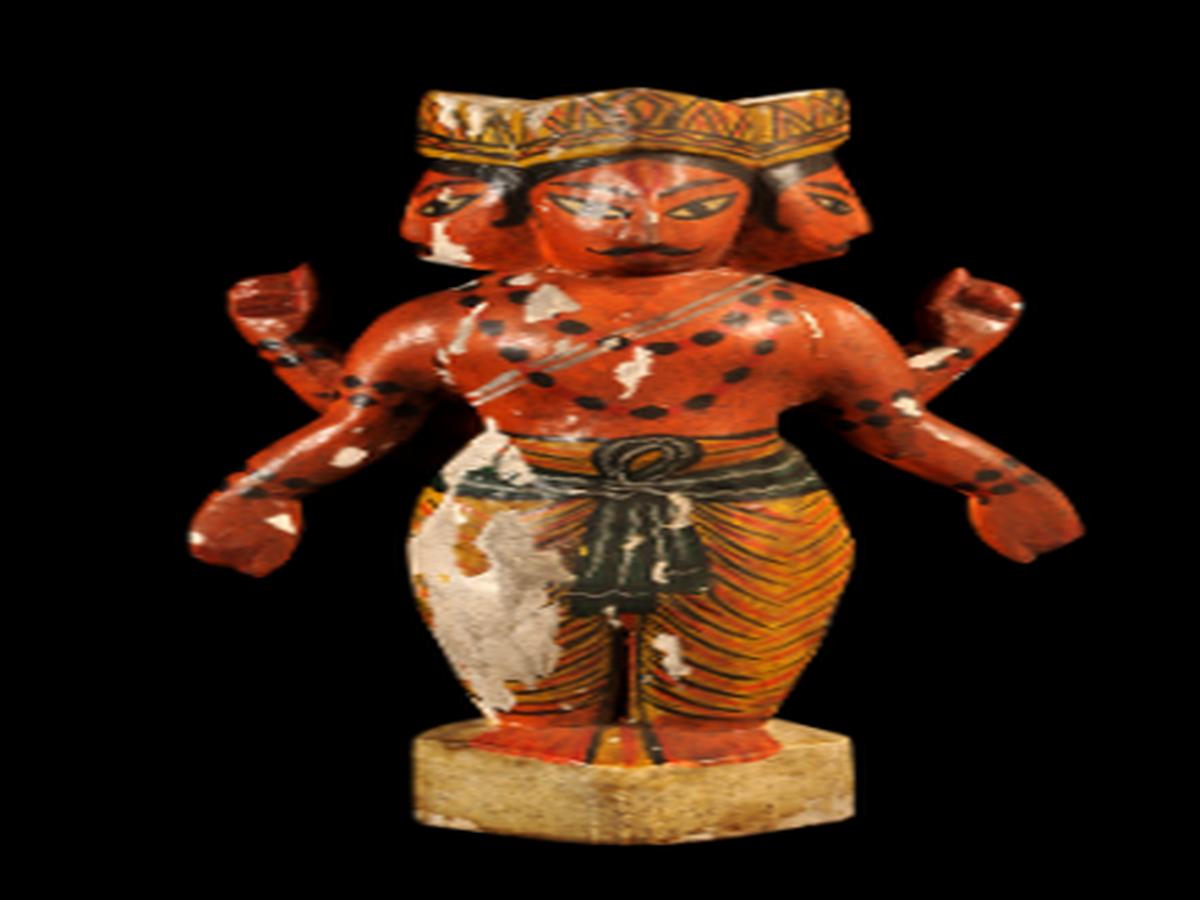State
Tribe Name
Art Type
short description
The intricate wooden effigy of Lord Brahma carved by the Sutradhar tribe exemplifies this long-standing grounded tradition of sacred sculpture and story-telling through woodcraft of the tribe. Made from a single block of wood, the squat figure stands majestically on a square-made pedestal, symbolizing stability and spiritual ground. This effigy signifies the creator in a trinity, named Brahma in Hindu mythology, and consists of as many as four faces and four arms, each signifying the four cardinal directions and a vastness in knowledge. The brownish look of the whole body provides it with a very earthy, natural touch, thus adding to its grounded, divinely looked appearance. The paints for the outfit are carefully done with yellow on the upper garment, so much resembling wisdom and divinity, while the waistcloth is green, which ascribes growth, nature, and balance.
Thumbnail

Filter Postion
Left
Filter Background
Off
Theme
Filter Header Image

content
Image

description
The intricate wooden effigy of Lord Brahma carved by the Sutradhar tribe exemplifies this long-standing grounded tradition of sacred sculpture and story-telling through woodcraft of the tribe. Made from a single block of wood, the squat figure stands majestically on a square-made pedestal, symbolizing stability and spiritual ground. This effigy signifies the creator in a trinity, named Brahma in Hindu mythology, and consists of as many as four faces and four arms, each signifying the four cardinal directions and a vastness in knowledge. The brownish look of the whole body provides it with a very earthy, natural touch, thus adding to its grounded, divinely looked appearance. The paints for the outfit are carefully done with yellow on the upper garment, so much resembling wisdom and divinity, while the waistcloth is green, which ascribes growth, nature, and balance.
The Sutradhar tribe, as already said, inhabited predominantly in West Bengal, are traditional good artisans, specializing in most cases of wood carving and sculptural work for temples, homes, and even for religious festivities. Their works are well within the parameters of folk stylization and classical religious motifs, wherein the deities appear to have been captured geometrically and colored symbolically. It is more than a religious idol; it is a cultural artifact that speaks of the devotional spirit, art, and crafts of the Sutradhar tribe. It is used as an object of worship and as a visual narrative retaining and disseminating traditional knowledge systems through art.
The Sutradhar tribe, as already said, inhabited predominantly in West Bengal, are traditional good artisans, specializing in most cases of wood carving and sculptural work for temples, homes, and even for religious festivities. Their works are well within the parameters of folk stylization and classical religious motifs, wherein the deities appear to have been captured geometrically and colored symbolically. It is more than a religious idol; it is a cultural artifact that speaks of the devotional spirit, art, and crafts of the Sutradhar tribe. It is used as an object of worship and as a visual narrative retaining and disseminating traditional knowledge systems through art.
Image Mode
landscape
promoted
On
Verified
Off
